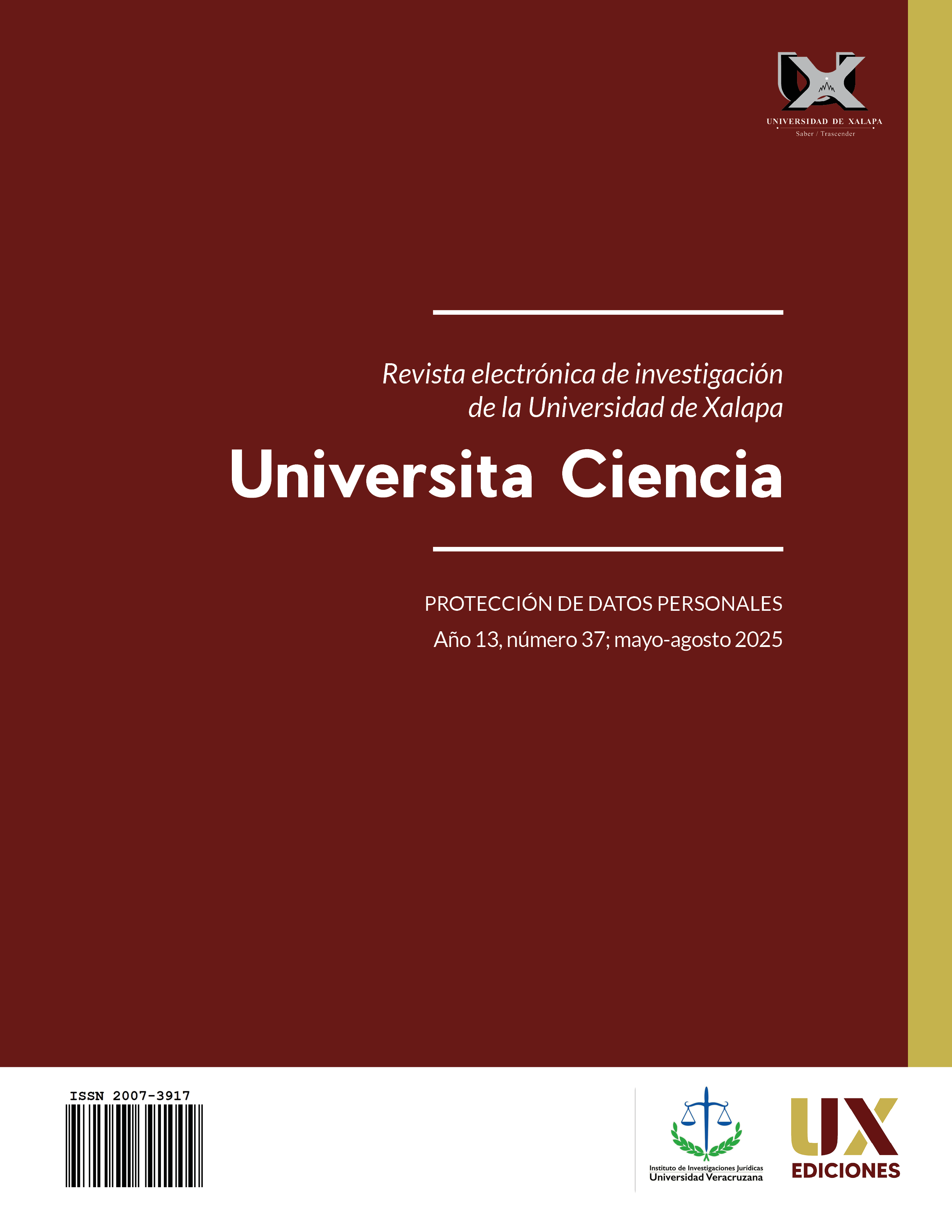Association between sensory processing sensitivity and susceptibility to reinforcement immediate and delayed and susceptibility to punishment anticipated
DOI:
https://doi.org/10.5281/zenodo.16326659Keywords:
sensitivity in sensory processing, susceptibility to reinforcement, susceptibility to punishment, personalityAbstract
To date, there are no studies that relate Sensory Processing Sensitivity (SPS) and susceptibility to reinforcement (immediate and delayed), as well as with susceptibility to punishment (immediate and anticipated), therefore the objective of the present research was to study this relationship. The EPAS, ESCA and ESRID scales were administered to measure these variables to 314 adults (M=27.33; SD=8.91). The most notable of the results were that high sensitivity is moderately related to high susceptibility to well-being due to not obtaining reinforcement from the ESRID and fear of rejection from the ESCA, and weakly related to well-being due to reinforcement from the ESRID and caution from the ESCA. Thus, it can be inferred that the relationship of high sensitivity is moderate with short-term susceptibilitie but attenuates or disappears in the medium and long term.
Metrics
References
Acevedo, B., Aron, E., Aron, A., Sangster, M., Collins, N. & Brown, L. (2014). The highly sensitive brain: an fMRI study of sensory processing sensitivity and response to others emotions. Brain and Behavior, 4, 480-594. http://doi.org/10.1002/brb3.242
American Psychological Association. (2023). Ethical Principles of Psychologists and Code of Conduct. Ethical principles of psychologists and code of conduct (apa.org).
Aron, E. N. (2006). El don de la sensibilidad. https: file:///C:/Users/Propietario/Documents/PAS/El%20Don%20de%20la%20Sensibilidad%20-%20Elaine%20Aron.pdf
Aron, E.N., & Aron, A. (1997). Sensory-Processing Sensitivity and Its Relation to Introversion and Emotionality. Journal of Personality and Social Psychology, 73 (2), 345-368. https://doi.org/10.1037//0022-3514.73.2.345
Campbell, T., & Moore, K. (2018). Sensory-processing sensitivity: A model to predict social anxiety. 84-84. Poster session presented at Australian Psychological Society (APS) Annual Conference 2018, Sydney, New South Wales, Australia.
Carver, C.S. y White, T.L. (1994). Behavioral inhibition, behavioral activation, and affective responses to impending reward and punishment: the BIS/BAS scales. Journal of Personality and Social Psychology, 67(2), 319-333. https://doi.org/10.1037/0022-3514.67.2.319
Corr, P. J., & Cooper, A. J. (2016). The reinforcement sensitivity theory of personality questionnaire (RST-PQ): development and validation. Psychological assessment, 28(11), 1427-1440. https://doi.org/10.1037/pas0000273
Costa-López, B., Ruiz-Robledillo, N., Ferrer-Cascales, R., Albaladejo-Blázquez, N., & Sánchez-SanSegundo, M. (2021). Relationship between Sensory Processing Sensitivity and Mental Health. Medical Sciences Forum, 4(19). https://doi.org/10.3390/ECERPH-3-09064
Evers, A., Rasche, J., & Schabracq, M. J. (2008). High sensory-processing sensitivity at work. International Journal of Stress Management, 15(2), 189-198. https://psycnet.apa.org/doi/10.1037/1072-5245.15.2.189
Greven, C. U., Lionetti, F., Booth, C., Aron, E. N., Fox, E., Schendan, H. E., ... & Homberg, J. (2019). Sensory processing sensitivity in the context of environmental sensitivity: A critical review and development of research agenda. Neuroscience & Biobehavioral Reviews, 98, 287-305. https://doi.org/10.1016/j.neubiorev.2019.01.009
Gomez, R., Watson, S., Wynen, J. V., Trawley, S., Stavropoulos, V., & Corr, P. J. (2021). Reinforcement sensitivity theory of personality questionnaire: factor structure based on CFA and ESEM, and associations with ADHD. Journal of Personality Assessment, 103(4), 523-534. https://doi.org/10.1080/00223891.2020.1769113
Gray, J. A. (1970). The psychophysiological basis of introversion-extraversion. Behaviour research and therapy, 8(3), 249-266. https://doi.org/10.1016/0005-7967(70)90069-0
Gray, J. A. (1981). A critique of Eysenck’s theory of personality. In A model for personality (pp. 246-276). Springer, Berlin, Heidelberg. https://doi.org/10.1007/978-3-642-67783-0_8
Hofmann, S. G., & Bitran, S. (2007). Sensory-processing sensitivity in social anxiety disorder: Relationship to harm avoidance and diagnostic subtypes. Journal of anxiety disorders, 21(7), 944-954. https://doi.org/10.1016/j.janxdis.2006.12.003
Kajdzik, M., & Moroń, M. (2024). Signaling high sensitivity to influence others: Initial evidence for the roles of reinforcement sensitivity, sensory processing sensitivity, and the dark triad. Psychological Reports, 127(5), 2451-2469. https://doi.org/10.1177/00332941231152387
McNaughton, N. (2025). The legacies of the neuropsychology of anxiety for Reinforcement Sensitivity Theory. Motivation Science, 11(1), 1-17. https://psycnet.apa.org/doi/10.1037/mot0000353
McNaughton, N., & Gray, J. A. (2000). Anxiolytic action on the behavioural inhibition system implies multiple types of arousal contribute to anxiety. Journal of affective disorders, 61(3), 161-176. https://doi.org/10.1016/S0165-0327(00)00344-X
Montoya-Pérez, K.S., Ortega, J.I.M., Montes-Delgado, R., Padrós-Blázquez, F., de la Roca Chiapas, J.M., & Montoya-Pérez, R. (2019). Psychometric Properties of The Highly Sensitive Person Scale in Mexican Population. Psychology Research and Behavior Management, 12, 1081-1086. https://doi.org/10.2147/PRBM.S224808
Montoya-Pérez, K., Montes-Delgado, R., de la Roca Chiapas, J., Montoya-Pérez, R., & Padrós-Blázquez, F. (2021) Sensory Processing Sensitivity and Adult Attachment in Emotional Regulation Difficulties. Psychology, 12, 1848-1862. https://doi.org/10.4236/psych.2021.1211111
Montoya-Pérez, K. S., & Padrós-Blázquez, F. (2024). Gaudibilidad y Sensibilidad en el Procesamiento Sensorial como predictores de la desregulación emocional. CES Psicología, 17(3), 69–79. https://doi.org/10.21615/cesp.7027
Padrós-Blázquez, F., & Guzmán-Barrera, M.E. (2021). Desarrollo y estudio psicométrico de la Escala de Susceptibilidad al Castigo Anticipado (ESCA). Revista Chilena de Neuro-psiquiatría, 59(4), 269-279. https://doi.org/10.4067/S0717-92272021000400269
Padrós-Blázquez, F., & Guzmán-Barrera, M.E. (2023). Desarrollo y estudio psicométrico de la Escala de Susceptibilidad al Refuerzo Inmediato y Demorado (ESRID). Revista Chilena de Neuro-Psiquiatría, 61(2), 166-175. https://doi.org/10.4067/s0717-92272023000200166
Padrós-Blázquez, F., Guzmán-Barrera, M. E., & Reynoso-González, O. U. (2024). susceptibilidades al refuerzo (inmediato y demorado) y al castigo anticipado como predictores de la procrastinación irracional. Horizonte de Enfermería, 35(1), 231-245. https://doi.org/10.7764/Horiz_Enferm.35.1.231-245
Padrós-Blázquez, F., López-Solà, C., Cruz-García, M.A., Martínez-Medina, M.P. (2019). PAMTA Worry Model (Perception of future threat, Activation, Motivation, Thought & Action): Functional and Pathological Worry. Revista Argentina Clínica psicológica, 28, 2, 190-198. http://bit.ly/3ICAcca
Squillace, M., Picón, J. y Schmidt, V. (2011). El concepto de impulsividad y su ubicación en las teorías psicobiológicas de la personalidad. Revista Neuropsicología Latinoamericana, 3(1), 8-18. http://pepsic.bvsalud.org/pdf/rnl/v3n1/v3n1a02.pdf
Smolewska, K. A., McCabe, S. B., & Woody, E. Z. (2006). A psychometric evaluation of the Highly Sensitive Person Scale: The components of sensory-processing sensitivity and their relation to the BIS/BAS and “Big Five”. Personality and Individual Differences, 40(6), 1269-1279. https://doi.org/10.1016/j.paid.2005.09.022
Published
How to Cite
Issue
Section
License

This work is licensed under a Creative Commons Attribution-NonCommercial-ShareAlike 4.0 International License.
This journal adheres to the Creative Commons license in the definition of its policy of open access and reuse of published material, in the following terms:
- Accessibility to articles and other publications in whole or in part under the concept of copying, distribution, public communication , interactive access (through the Internet or other means), explicitly maintaining the recognition of the author or authors and the journal itself (authorship acknowledgment).
- Warning that if the articles are remixed, modified or fragments used in other creations, the modified material cannot be distributed, nor is it allowed to reconstruct versions from the original published articles (derived works).
- The use of the contents of the published articles, in whole or in part, for profit (non-commercial recognition) is prohibited.
The author retains copyright, transfers or grants exclusive commercial rights to the publisher, and a non-commercial license is used.














